Several species of Plantago occur in the UK, of which five are native (Stace, 2019). Blamey et al. (2013) describe them as ‘Rather dull perennials ……. , whose tiny flowers, with their parts in fours and prominent stamens, are in dense spikes on unbranched leafless stems.’ However, although they are not the most remarkable looking plants, when you get up close to them, their flowers are really quite beautiful, and their fruits and seeds are worth a second look too (of which more later).
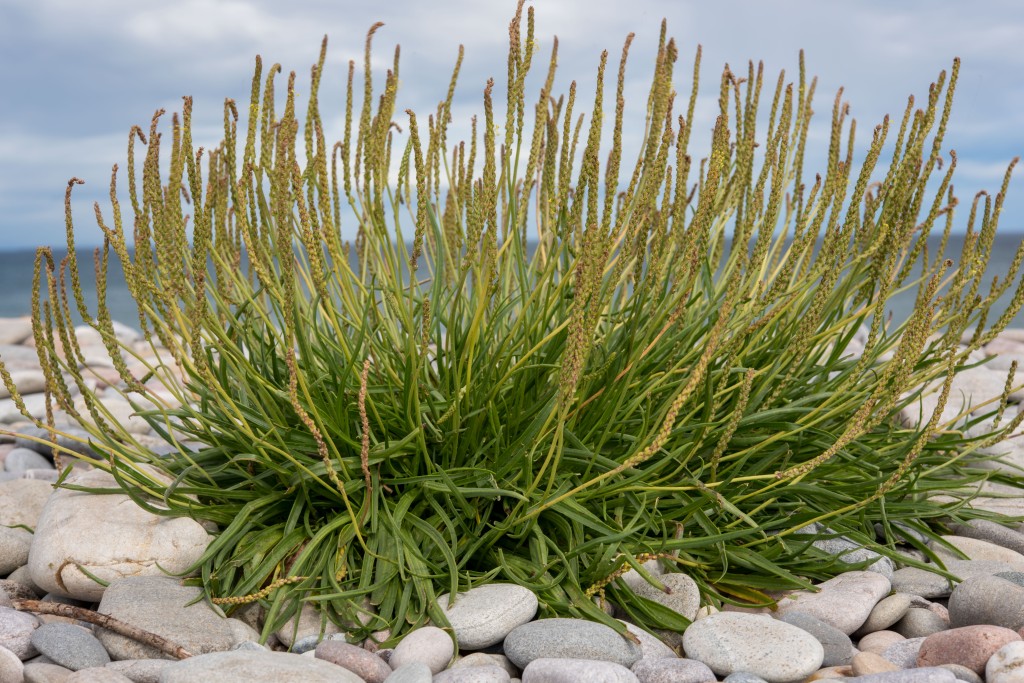

Plantago coronopus L. Fig. from book Deutschlands Flora in Abbildungen Johann Georg Sturm (Painter: Jacob Sturm) 1796 (https://commons.wikimedia.org/wiki/File:Plantago_coronopus_Sturm64.jpg)
The two species which are the topic of this blog are P. coronopus (Buck’s-horn plantain) and P. maritima (Sea plantain), which are both halophytes – meaning that they are salt-tolerant. (Plants which are not halophytes are termed ‘glycophytes’). While the leaves of most of the British plantains have several longitudinal veins, with leaf margins smooth or slightly toothed, the leaves of P. coronopus only have one longitudinal vein and its leaves are often pinnate rather than linear. The leaves of P. maritima are usually more fleshy, and are linear, but may be slightly toothed. P. coronopus flowers are typically hermaphrodite (Dowling, 1933) while P. maritima exhibits gynodioecy in which female plants co-exist with hermaphrodite plants (Ross, 1970).

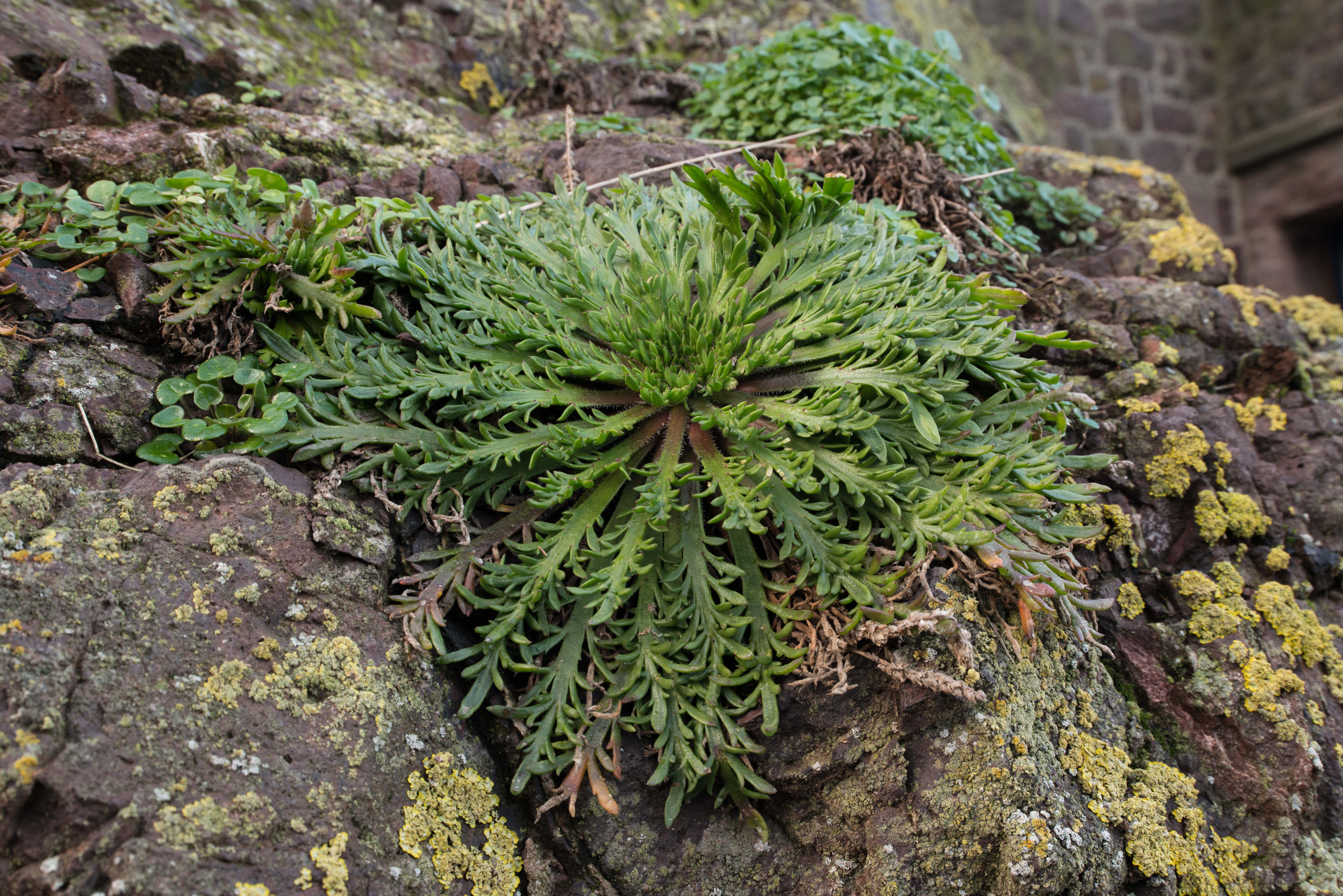
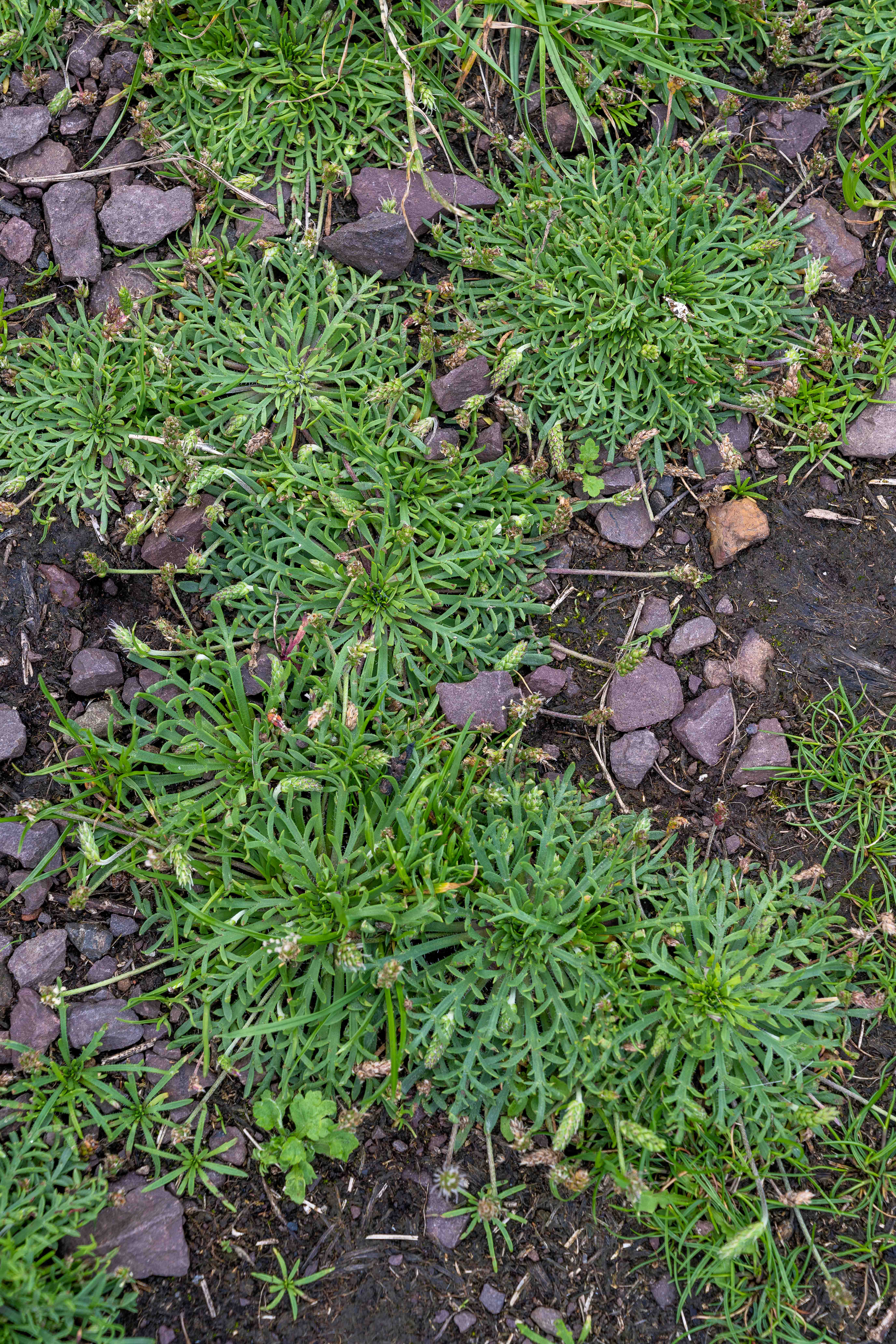
Plantago coronopus in flower, rosettes on rocks at Dunbar and near Seafield sewage works. Lothian and East Lothian, Scotland. © Chris Jeffree
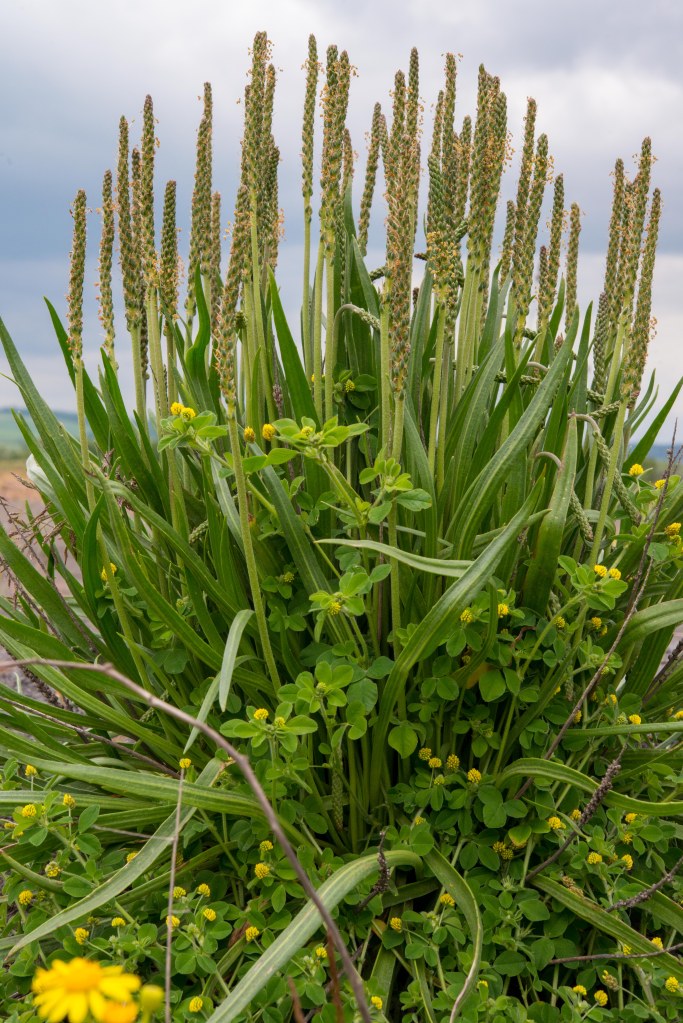
Distribution
Both of these species are native to Britain. GBIF distribution maps show that P. coronopus is close to its northern limit in Scotland at 61 degrees north in Shetland, whereas P. maritima extends to 70 degrees north in Scandinavia.

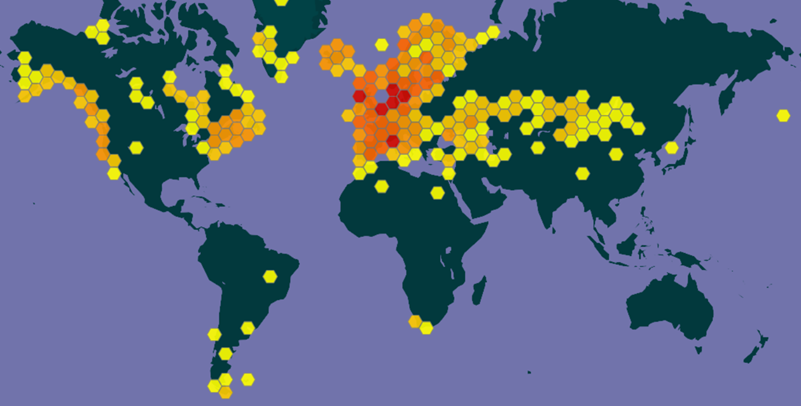
Although P. maritima and P. coronopus are both halophytes, they have strikingly different distributions in Britain.
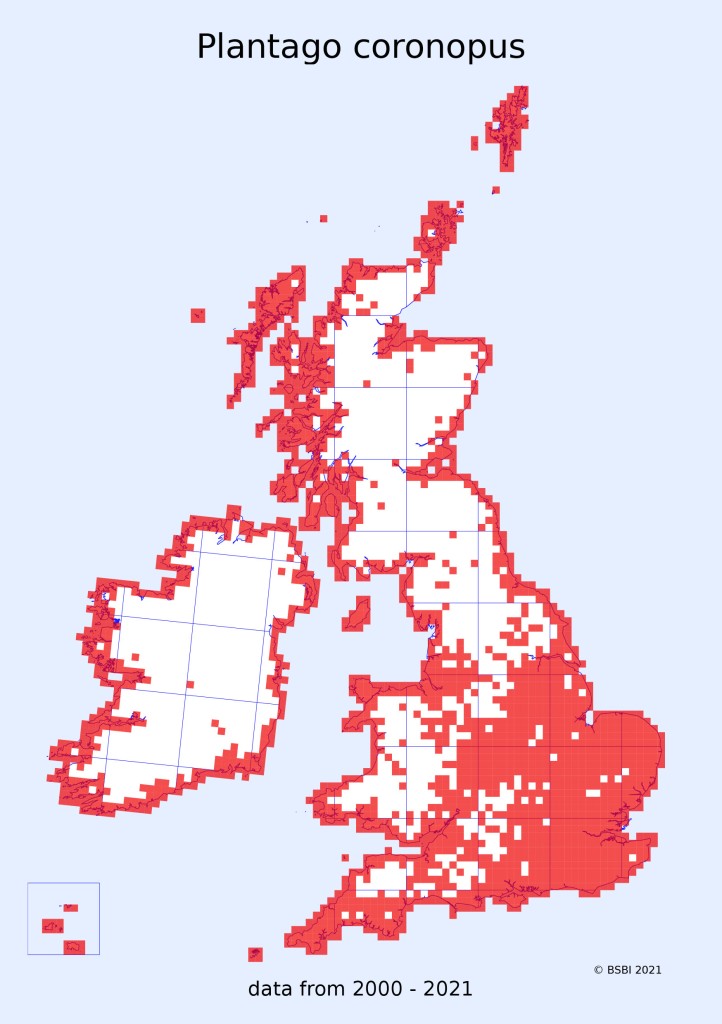

Distribution maps of Plantago coronopus and P. maritima, using data from 2000 – 2021 © BSBI
Both species are common in coastal areas, where P. coronopus favours short turf, bare ground on sandy soils. and rocky crevices. P. maritima occurs in similar situations but also in salt marshes and rockier shores. The inland populations of the species differ: P. coronopus is abundant inland in much of lowland England while P. maritima is frequent inland in north and northwest Scotland where its eastern range is approximately delineated by part of the route of the A85 and A9 roads. Closer examination of BSBI maps (BSBI maps) suggests that P. maritima is spreading along roads in Scotland (see below), while P. coronopus is the predominant species spreading inland in England. Scott and Davison (1982) describe the spread of several maritime species along roadsides since the 1970’s, attributed to the use of de-icing salt on roads which started in the 1960’s. De-icing salt kills glycophyte species and creates an open habitat for halophytes, which are spread along roads by seed carried in vehicle slip-streams.

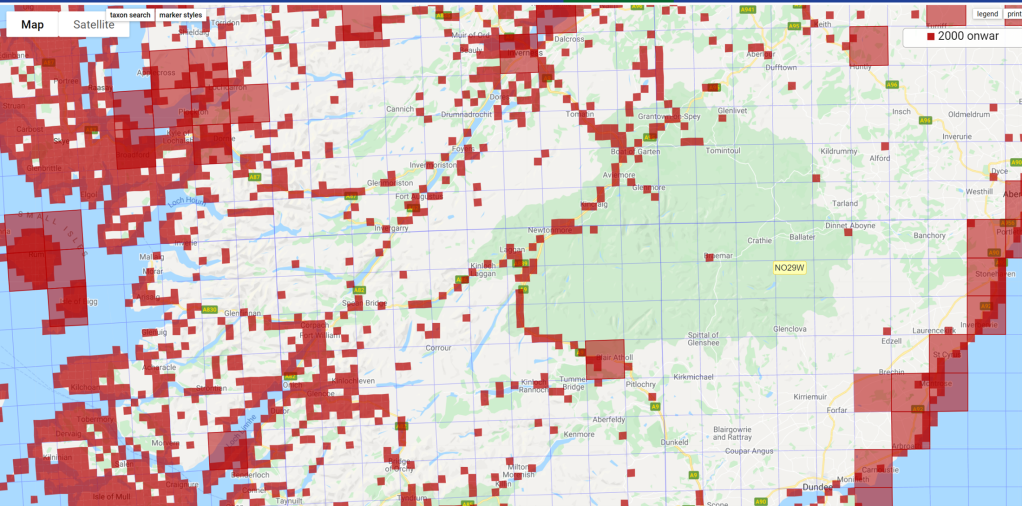
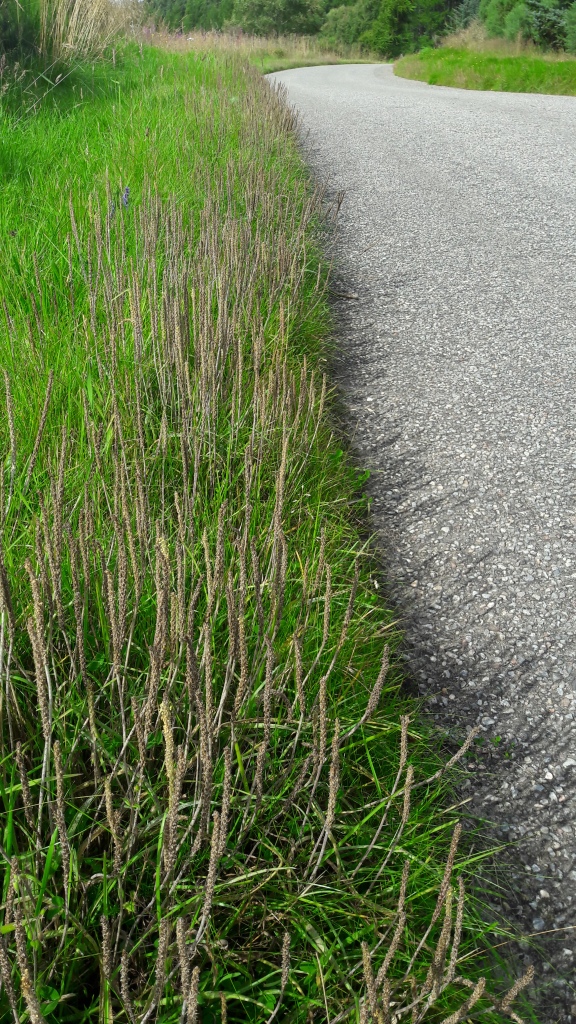
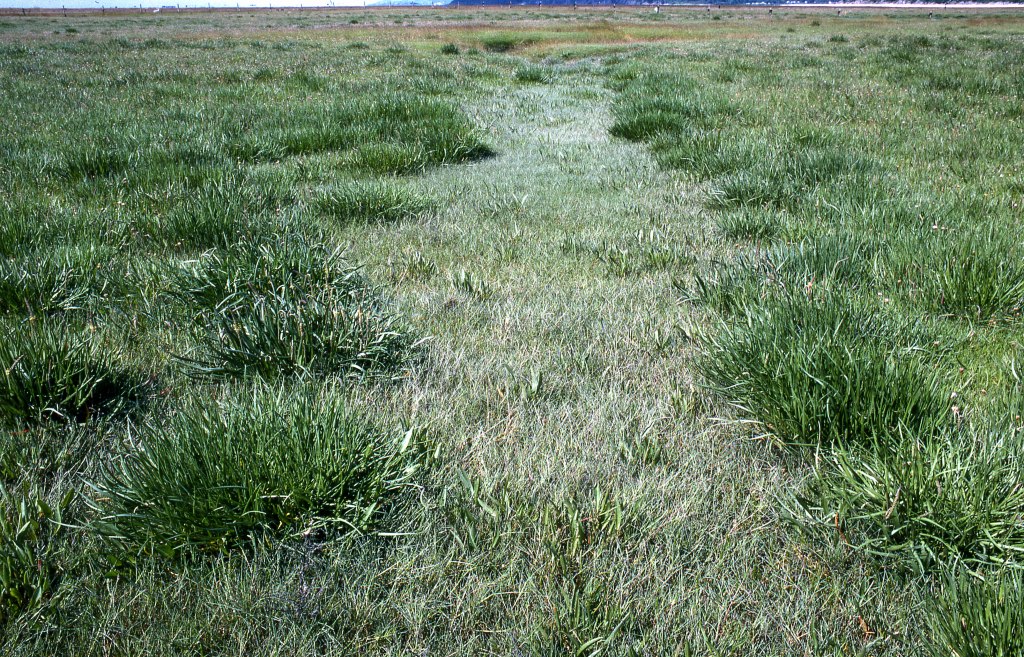
The spread of P. coronopus along roads has also been described elsewhere. Schmidt et al. (2016) report P. coronopus as a new discovery to the Hungarian flora from 2013 onwards, associated with motorways, main roads and hypermarkets, and Schmidt and Maslo (2020) report that populations of P. coronopus on roadsides in Bosnia and Herzegovina were first recorded in 2015, since when populations have expanded.
Seeds and their dispersal
Mucilage is a common feature of seeds of Plantago species. The seeds of P. coronopus are of two types (Dowling, 1933) and have different means of dissemination. They are all held in a capsule, where four seeds of similar shape and size are dehisced together after the capsule splits transversely, while a remaining fifth and smaller seed is held higher in the capsule and shed separately with the capsule lid. These two types of seeds behave very differently in water: the four larger seeds rapidly absorb water and are surrounded by a conspicuous mucilage sheath, these quickly sink to the bottom after a few minutes, whereas the smaller fifth seeds have less mucilage, and remain floating for 48 hours or more, by which time they have started to germinate, whereas the larger sunken seeds have not. Both types of seeds germinated similarly on damp blotting paper, suggesting that lack of oxygen in the sunken seeds affected germination. However, although the fifth seeds germinate more quickly in experimental situations, in nature the seeds attached to the capsule lids are shed later by the plant.
Increasing importance of halophyte crops
The term ‘halophyte’ is derived from ancient Greek, from ‘halas’ (salt) and ‘phyton’ (plant). Globally, only about 2% of plant species are halophytes. Halophyte species in general are the topic of increasing research interest because of their potential as food, fodder or fuel crops which can be grown on saline soils and irrigated with saline water, thereby using land and water which is not suitable for many crops. Researchers consider that P. coronopus has the potential to become a cash-crop halophyte because of its edibility, nutritional value and the fact that it can be grown in highly (30% NaCl) saline substrates (Koyro, 2006). P. coronopus is already used as an ingredient of winter salads in Italy where it is known as ‘Minutina’ or ‘Erba stella’ and is described as having a nutty flavour. If you would like to try it, you can buy seed online. Many halophytic plants have been used traditionally as crop plants (Panta et al. 2014) and are now becoming recognised in export markets. Among these, the price of quinoa (Chenopodium quinoa) to producers in Peru and Bolivia tripled between 2000 and 2010 and it is now widely sold in British supermarkets as a high-protein, gluten-free product.
Julia Wilson
References
Blamey M, Fitter R, Fitter A (2013) Wild flowers of Britain and Ireland. Domino Guides. Bloomsbury. London.
Cheeseman, JM (2015) The evolution of halophytes, glycophytes and crops, and its implications for food security under saline conditions. New Phytologist 206: 557–570 https://nph.onlinelibrary.wiley.com/doi/pdf/10.1111/nph.1321 7
Dodds, JG (1953) Plantago coronopus L. Journal of Ecology 41(2): 467-478. https://www.jstor.org/stable/2257071
Dowling RE (1933) The reproduction of Plantago coronopus: an example of morphological and biological seed dimorphism. Annals of Botany 47: 861-872. https://www.jstor.org/stable/43237513
Erdei L, Kuiper PJC (1979) The effect of salinity on growth, cation content, Na+ uptake and translocation in salt-sensitive and salt-tolerant Plantago species. Physiologia Plantarum 47: 95-99.
Koyro H-W (2006) Effect of salinity on growth, photosynthesis, water relations and solute composition of the potential cash crop halophyte Plantago coronopus (L.) Environmental and Experimental Botany 56:136–146.
Panta S, Flowers T, Lane P, Doyle R, Haros G, Shabala S (2014) Halophyte agriculture: Success stories. Environmental and Experimental Botany 107: 71-83. https://doi.org/10.1016/j.envexpbot.2014.05.006
Ross MD (1970) Breeding systems in Plantago. Heredity 25:129-133. https://www.nature.com/articles/hdy197013
Schmidt D, Dítětová Z, Horváth A, Szűcs P (2016) Coastal newcomer on motorways: the invasion of Plantago coronopus in Hungary. Studia bot. hung. 47(2), pp. 319–334. http://publication.nhmus.hu/pdf/Studia/StudiaBotHung_2016_Vol_47_2_319.pdf
Schmidt D, Maslo S (2020) A continuing trend: Plantago coronopus spreads also along the roads in Bosnia and Herzegovina. http://www.bio.bas.bg/~phytolbalcan/PDF/26_3/PhytolBalcan_26-3_08_Schmidt_&_Maslo.pdf
Scott NE, Davison AW (1982) De-icing salt and the invasion of verges by maritime plants. Watsonia 14, 41-52. https://archive.bsbi.org/watsonia_14.html
Scott NE and Davison AW (1985) The distribution and ecology or coastal species on roadsides. Vegetatio 62:433-440. http://www.jstor.com/stable/20146279
Stace C (2019) New Flora of the British Isles Fourth Edition C&M Floristics, ISBN 978-1-5272-2630-2